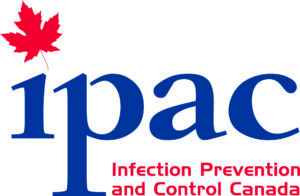
Understanding Medical Device Reprocessing
Oct 31
3 min read
0
18
0
Medical device reprocessing is the cleaning, disinfection, and sterilization of reusable medical devices. In foot care, this includes nippers, burs, and files. The reprocessing process is vital to ensure that these instruments are safe for patients, particularly those with weakened immune systems or existing foot conditions.
The reprocessing involves three main steps:
Cleaning: This step removes visible soil and organic material from the device. For example, an instrument used for a foot procedure must be scrubbed to eliminate blood and tissue residues.
Disinfection: This process uses chemical agents to eliminate most pathogens and remove microscopic tissue residue. For instance, tools are often soaked in a disinfectant solution for a specified time to ensure effectiveness.
Sterilization: This is the complete destruction of all forms of microbial life, including spores. Steam sterilization is used for foot care instruments.
Each step plays a crucial role in ensuring medical devices are safe for patient use.
The Risks of Non-Sterile Foot Care Instruments
Using unsterile medical devices can lead to serious complications, including infections and delayed healing. Over 3.5 million people in Canada live with diabetes, a condition that can delay healing in the extremities, and make people susceptible to opportunistic infections. Clients with compromised immune systems, either from medications or medical conditions, are at particular risk. A simple nick from an unsterilized instrument can escalate into severe health issues.
Infections resulting from non-sterile devices can lead to:
Severe complications: In extreme cases, infections can lead to amputations, particularly in diabetic patients - up to 24% of patients with diabetic foot infections experience lower limb amputations. A simple infection that can easily be treated in someone with an intact immune system may cause months of complications for someone on chemotherapy, and can be deadly for someone with a congenital or acquired immunodeficiency.
Increased healthcare costs: Treating infections can require costly medical interventions, with estimates suggesting that treating a diabetic foot ulcer can exceed $15,000. The initial healthcare cost of an amputation can top $50,000, which doesn't include ongoing care after discharge, or prostheses.
Increased patient and family stress: Developing a prolonged illness or injury can create significant personal and family distress, as well as the potential for loss of income during hospitalization/treatment, permanent loss of function, and increased care needs.
By ensuring sterility in medical devices, foot care providers can significantly decrease these risks and improve patient outcomes.
Sterility in Infection Control
Canadian Infection Prevention and Control (IPAC) standards require steam sterilization of all reusable foot care instruments used by nurses and doctors. Even though foot care nurses do not perform any procedures that cut into the skin, there is still a risk of bleeding when ingrown nails are trimmed. Toenail fungus is a very common infection. As well, occasionally people have wounds under their nails that aren't revealed until foot care is performed.

When devices are not adequately sterilized, they can harbor harmful bacteria, viruses, and fungi. An unsterile foot care instrument can introduce pathogens directly into the bloodstream, skin, or nails. Common pathogens not killed by disinfecting solutions include:
norovirus (stomach flu)
tinea unguium (toenail fungus)
tinea pedis (athlete's foot)
m. tuberculosis (most common in the lungs, but can affect all areas of the body)
hepatitis (liver infection that in some cases becomes chronic or leads to cancer)
c. difficile (causes severe diarrhea and can be particularly dangerous for people who have a compromised immune system, and for the elderly and very young)
Implementing thorough sterilization protocols helps to protect patients.
Sole Focus's Commitment
We are passionate about using best practice standards at Sole Focus. As such, we adhere to IPAC and the Canadian Standards Association (CSA Group) standards for the cleaning of our clinic area, and the reprocessing of our foot care instruments. All of our reusable instruments are kept sterile until they are needed in your appointment. You can be sure we are using sterile instruments when they are packaged in a paper and plastic pouch that is opened right before use. Follow our series of blog posts on the cleaning and sterilization process to learn more!
Final Thoughts
The significance of sterility in medical device reprocessing for foot care is undeniable. Proper cleaning, disinfection, and sterilization of medical devices are critical to preventing infections and ensuring positive health outcomes.









